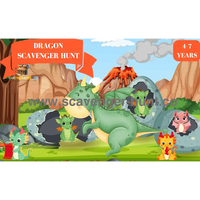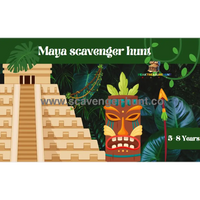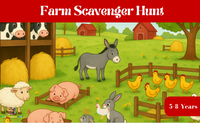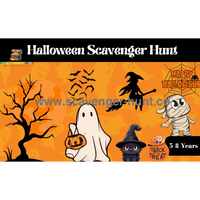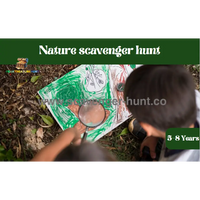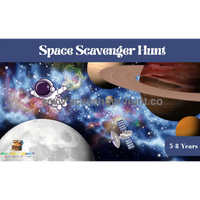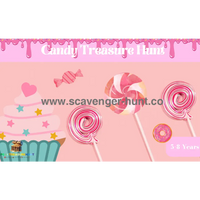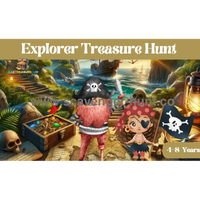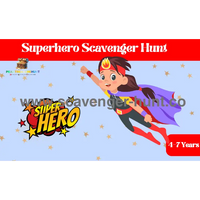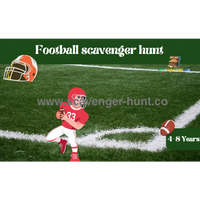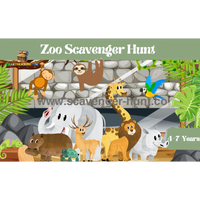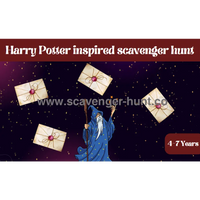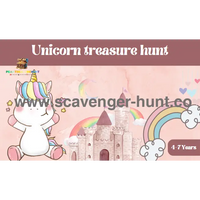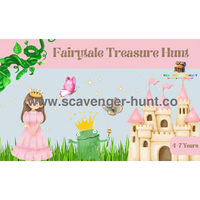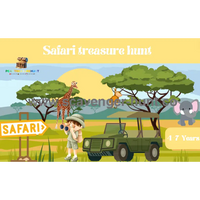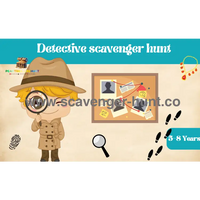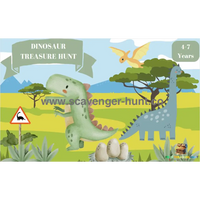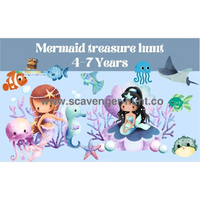What happens in a nature scavenger hunt?
A nature scavenger hunt is an engaging outdoor activity designed to encourage exploration and observation of the natural environment. This adventure typically involves participants, either individually or in teams, searching for a list of natural items, completing tasks, or discovering specific spots within a designated natural area, such as a park, forest, or nature reserve.
The process begins with the organizers creating a list of items or tasks tailored to the environment where the hunt will take place. This list can include a variety of objects to find, such as specific types of leaves, rocks, insects, or flowers, and tasks like listening for certain bird calls, finding evidence of animal habitats, or taking photos of natural phenomena.
Participants are then given the list and a set of rules or guidelines, which often emphasize respect for the environment by not disturbing wildlife or picking plants. They may also be equipped with tools to aid their search, such as magnifying glasses, binoculars, or cameras.
As the hunt progresses, participants explore the area, using their observation skills and knowledge of nature to identify and locate the items or complete the tasks. This exploration not only leads to physical activity but also fosters a deeper connection with the natural world, as participants learn to notice and appreciate the diversity and beauty of their surroundings.
In addition to the educational and recreational benefits, a nature scavenger hunt can also promote teamwork and problem-solving skills, as participants may need to work together to find items or decipher clues that lead to the next discovery.
Upon completion of the hunt, there's often a gathering where participants share their findings and experiences. This debriefing session can include discussions about the items found, their significance in the ecosystem, and reflections on what was learned during the adventure.
Overall, a nature scavenger hunt is a fun and interactive way to explore the outdoors, learn about the environment, and cultivate a sense of wonder and stewardship for the natural world.
How do you do a nature scavenger hunt?
Organizing a nature scavenger hunt involves a series of thoughtful steps aimed at creating an engaging and educational outdoor experience. To start, one must first select a suitable outdoor location, such as a local park, forest, or nature reserve, where participants can safely explore and observe natural elements. The next crucial step is to develop a list of items or tasks that participants will search for or complete. This list should be tailored to the chosen environment and can include a variety of natural objects like specific types of leaves, rocks, or flowers, and activities such as identifying bird calls or finding animal tracks.
Once the list is prepared, it's important to establish clear rules and guidelines for the scavenger hunt to ensure the safety of the participants and the preservation of the natural habitat. Participants should be instructed not to disturb wildlife, pick plants, or leave any trash behind. Providing participants with tools such as magnifying glasses, binoculars, or cameras can enhance their experience by helping them observe and document their findings more effectively.
Participants are then given the list and set out to explore the area, using their senses and observation skills to find the items or complete the tasks. This exploration not only promotes physical activity but also encourages participants to connect with nature, fostering a sense of appreciation and wonder for the environment around them.
Throughout the scavenger hunt, participants engage in problem-solving and may need to work collaboratively to locate items or decipher clues. This aspect of the activity enhances teamwork and communication skills, making the scavenger hunt a valuable team-building exercise.
After the scavenger hunt concludes, gathering participants to share their discoveries and experiences can be a rewarding way to end the activity. This sharing session offers an opportunity for educational discussions about the natural objects found and their roles in the ecosystem, as well as reflections on the overall experience.
In summary, conducting a nature scavenger hunt is an enriching activity that combines adventure, learning, and environmental awareness. By carefully planning and implementing the steps outlined, organizers can create a memorable and meaningful experience that encourages participants to explore, appreciate, and protect the natural world.

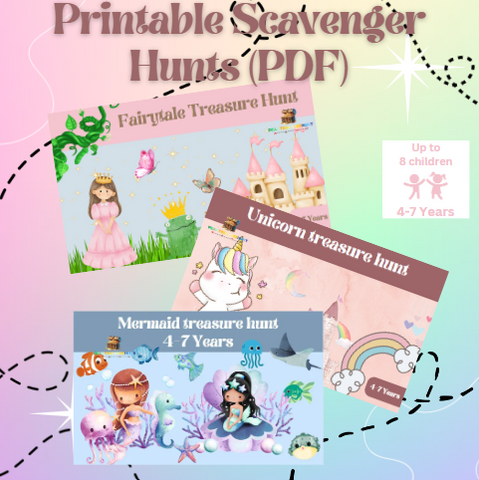

Planning Your Nature Scavenger Hunt
Embarking on a nature scavenger hunt is an exciting way to connect children with the outdoors, but it requires thoughtful preparation to ensure that the experience is both rewarding and safe. This chapter delves into the critical steps of planning your nature scavenger hunt, from choosing the right setting to drafting a list that sparks curiosity, all while prioritizing safety.
Selecting a Suitable Location
The first step in planning your nature scavenger hunt is to choose a location that is both safe and rich in biodiversity. The ideal setting offers a variety of natural elements without posing too many challenges for young participants. Consider these options:
-
Local Parks: Often designed with safety in mind, local parks are a great option, offering diverse plant life, open spaces for observation, and usually, clear paths.
-
Forests or Nature Reserves: For a more immersive experience, a forest or nature reserve can provide a wide range of flora and fauna. Ensure the area is suitable for children and check for any access restrictions.
-
Your Backyard: Don't underestimate the educational potential of your backyard. It can be a controlled, safe environment for children to explore nature's wonders.
Creating a List of Items to Find
A well-crafted list is the heart of a nature scavenger hunt. It guides the adventure, encouraging children to observe their surroundings closely. When creating your list, consider the following:
-
Tailor to the Environment: Make sure the items on your list can actually be found in your chosen location. Research the area's common plants, animals, and geological features.
-
Age-Appropriate Challenges: Adjust the complexity of the items and tasks based on the age of the participants. For younger children, simple items like "a green leaf" or "a smooth rock" work well, while older children might enjoy the challenge of finding "a deciduous tree" or "an insect with six legs."
-
Promote Learning: Include items that encourage participants to learn something new about their environment, such as identifying a bird by its song or finding a plant and learning its name.
Safety Tips and Guidelines
Ensuring the safety of all participants is paramount. Here are some essential safety tips and guidelines to follow:
-
Brief Participants and Parents: Before starting, brief all participants and accompanying parents about the hunt's rules, the importance of staying within designated areas, and respecting nature.
-
Dress Appropriately: Advise participants to wear appropriate clothing and footwear for the terrain and weather conditions.
-
Stay Hydrated and Protected: Remind everyone to bring water bottles and wear sunscreen and hats to protect against the sun.
-
First Aid: Always have a first aid kit on hand and be prepared to address minor injuries or allergic reactions.
-
Buddy System: Implement a buddy system, especially in larger areas, to ensure no child wanders off alone.
By carefully planning your nature scavenger hunt with attention to location, engaging challenges, and safety, you set the stage for an educational and enjoyable adventure. This proactive approach ensures that participants can explore and learn about the natural world in a safe, controlled environment, fostering a lasting appreciation for the beauty and complexity of nature.
Creating Engaging Clues and Challenges
Creating engaging clues and challenges is the cornerstone of a successful nature scavenger hunt, transforming a simple outdoor activity into an enriching learning experience. This chapter delves into the art of designing clues that captivate the imagination, stimulate the senses, and foster a deeper understanding of the natural world. Tailoring these elements to be age-appropriate ensures that children of all ages can participate fully, enjoy the discovery process, and gain valuable knowledge about their environment.
Using Rhymes and Puzzles
Rhymes and puzzles are not only fun but also stimulate cognitive development and language skills. Crafting clues in rhyme form adds a layer of intrigue and encourages children to think critically about the meaning behind each line. Puzzles, on the other hand, challenge participants to solve problems and think creatively. For example, a clue might lead children to find "the tree whose bark peels like paper," guiding them to a birch tree. These approaches make the scavenger hunt more interactive and engaging, turning each clue into a mini-adventure.
Incorporating Sensory Activities
Sensory activities invite children to engage with nature using all their senses, promoting mindfulness and a deeper connection to the environment. Listening for different bird songs, feeling the texture of various leaves, or smelling the earthy scent of the forest floor can all be part of the scavenger hunt. These activities encourage participants to slow down, observe closely, and appreciate the subtle details of the natural world. For instance, a challenge might involve finding a leaf with a texture similar to velvet, or identifying a location by the unique sound of the birds inhabiting it.
Balancing the Hunt with Educational Moments
Integrating educational moments into the scavenger hunt enriches the experience, turning fun challenges into opportunities for learning. Identifying plant species, understanding the role of pollinators, or learning about the principles of leave-no-trace are all valuable lessons that can be woven into the clues and challenges. This not only enhances children's nature literacy but also instills a sense of responsibility and stewardship towards the environment. For example, a clue could lead to a flowering plant, prompting a discussion on how bees pollinate flowers and why they are crucial for our ecosystems.
By thoughtfully creating clues and challenges that are engaging, sensory-rich, and educational, organizers can provide a meaningful and memorable experience for children. This approach not only makes the scavenger hunt an enjoyable activity but also a profound learning journey, inspiring young explorers to discover the wonders of nature and fostering a lifelong appreciation for the natural world.
Equipping Young Explorers
Fostering Teamwork and Cooperation
Nature scavenger hunts serve as a powerful platform for nurturing social skills among children, promoting a spirit of teamwork, collaboration, and mutual respect. By engaging in collective challenges and shared objectives, young explorers learn the value of working together, sharing discoveries, and supporting each other's efforts. This chapter delves into the strategies and approaches to enhance teamwork and cooperation through the adventure of a nature scavenger hunt.
Organizing Participants into Teams
To foster a sense of camaraderie and collective goal-setting, participants are grouped into teams. This arrangement encourages children to communicate, delegate tasks based on individual strengths, and make decisions as a unit, thereby enhancing their collaborative skills. Team formation can be based on age, interests, or even at random, to encourage new friendships. The key is to ensure that each team is balanced, giving every child an equal opportunity to contribute and participate actively.
-
Team Names and Themes: Assigning unique names or themes to each team adds an element of fun and identity. Teams could choose names related to nature, such as "Eagle Eyes" or "Trail Blazers," fostering a sense of pride and unity.
Creating Tasks That Require Teamwork
Designing the scavenger hunt with challenges that necessitate cooperation not only makes the tasks more engaging but also teaches important life skills. For instance, building a natural artifact, like a twig raft or a leaf collage, requires sharing ideas, materials, and work. Completing a group challenge, such as collectively identifying a certain number of plant species, encourages teams to pool their knowledge and resources.
-
Diverse Challenges: Include a variety of tasks that cater to different skills and interests, ensuring that every team member can shine in at least one area. This diversity promotes inclusivity and appreciation for each child's unique contributions.
Encouraging Respect for Nature and Fellow Participants
A cornerstone of the nature scavenger hunt is instilling a deep respect for the environment and fellow explorers. Emphasizing the leave-no-trace principles teaches children the importance of minimizing their impact on nature, encouraging practices such as not picking wildflowers or disturbing wildlife. Respect for fellow participants is cultivated through rules that promote fair play, kindness, and encouragement.
-
Reflection Sessions: After the hunt, holding a session where teams can share their experiences and learnings helps reinforce the values of teamwork, respect, and environmental stewardship. This reflection allows children to articulate what they discovered about nature, about working together, and about themselves.
By focusing on teamwork and cooperation, a nature scavenger hunt becomes more than just an educational activity; it becomes a lesson in social development and environmental responsibility. Through well-structured team challenges and a focus on mutual respect, children learn that collective effort and harmony with nature lead to the most rewarding discoveries.
Celebrating Discoveries
The culmination of a nature scavenger hunt is a moment of shared joy and accomplishment. It's a time to celebrate the day's discoveries, the effort everyone has put in, and the new knowledge gained from the adventure. This celebration is not just about acknowledging the completion of the hunt but also about fostering a sense of community and appreciation for the natural world. Here's how to ensure the celebration is as enriching and memorable as the hunt itself.
Sharing Findings in a Fun and Inclusive Way
The post-hunt gathering is a perfect opportunity for each child to shine by sharing their experiences and discoveries. Encouraging children to talk about their favorite part of the hunt allows them to express what intrigued or challenged them most, fostering a sense of accomplishment.
-
Show and Tell: Create a circle where each participant can show a found object or describe a memorable moment. This not only allows for individual expression but also for collective learning.
-
Photo Slideshow: If photos were taken during the hunt, a slideshow can visually recap the day's journey, sparking discussions and reflections on the adventure.
Giving Out Certificates or Eco-friendly Prizes for Participation
Recognizing every participant's effort with a certificate or an eco-friendly prize adds to the celebration's significance. These tokens of appreciation can be themed around nature, further reinforcing the day's lessons.
-
Personalized Certificates: Certificates with the child’s name, the date, and a specific achievement (like "Best Team Player" or "Nature Detective") make memorable keepsakes.
-
Eco-friendly Prizes: Opt for gifts that encourage continued exploration and learning, such as seed packets, reusable water bottles, or nature activity books.
Reflecting on What Was Learned
The conclusion of the scavenger hunt is a valuable time for reflection. Discussing what was learned and how these lessons can be applied in the future helps solidify the day's experiences into lasting insights.
-
Group Reflection: Ask open-ended questions like "What was the most surprising thing you learned today?" or "How can we help protect the nature we enjoyed today?"
-
Take-home Messages: Summarize key takeaways from the hunt, such as the importance of biodiversity, the role of pollinators, or how to observe nature responsibly.
The post-hunt celebration is an essential part of the nature scavenger hunt experience. It provides a space for children to process and share their discoveries, receive recognition for their efforts, and understand the broader implications of what they've learned. By celebrating these achievements, children are encouraged to continue exploring, questioning, and caring for the natural world around them, carrying forward the spirit of discovery and stewardship.
Frequently Asked Questions
1. What is the best age for children to participate in a nature scavenger hunt?
Nature scavenger hunts are suitable for children as young as 4 years old, with clues and challenges adjusted for different age groups to ensure everyone can participate and enjoy.
2. How can I make a scavenger hunt educational?
Incorporate facts about the natural world into your clues and challenges, encouraging participants to learn about the environment, wildlife, and conservation efforts.
3. What should we do if we can’t identify an item found during the hunt?
Use field guides or nature apps to research and identify unknown items, turning it into a learning opportunity.
4. How long should a nature scavenger hunt last?
The duration can vary, but 1-2 hours is generally sufficient to keep children engaged without becoming too tiring.
5. Can we do a nature scavenger hunt in any weather?
Yes, but plan accordingly. Sunny days are ideal, but a rainy day hunt can be an adventure in waterproof gear, focusing on different types of items like worms or water patterns.



Summary
The culmination of a nature scavenger hunt is a moment of shared joy and accomplishment. It's a time to celebrate the day's discoveries, the effort everyone has put in, and the new knowledge gained from the adventure. This celebration is not just about acknowledging the completion of the hunt but also about fostering a sense of community and appreciation for the natural world. Here's how to ensure the celebration is as enriching and memorable as the hunt itself.
The conclusion of a nature scavenger hunt is a pivotal moment, brimming with collective excitement and achievement. It's an opportunity to honor the day's explorations, the hard work put forth by all participants, and the valuable insights garnered from this immersive journey into nature. This celebration transcends mere recognition of the hunt's end; it cultivates a communal spirit and a deeper reverence for the environment, enriching the experience for everyone involved. Here's a comprehensive guide to crafting a celebration that is as memorable and impactful as the adventure itself.
Sharing Findings in a Fun and Inclusive Way
A key component of the post-hunt celebration is the sharing of discoveries. Each participant, or team, should have the chance to showcase their findings and share stories about their favorite moments. This can be done through:
-
Show and Tell: Create a circle where each child or team can present an item they found or discuss something new they learned. This can be as simple as a unique leaf, a photo of an animal spotted, or an interesting fact about local flora.
-
Nature Display: Set up a table or a designated area where items collected during the hunt (where appropriate and environmentally responsible) can be displayed. This can serve as a mini-exhibition of the day's findings, with participants guiding others through their discoveries.
Recognizing Effort with Certificates and Eco-friendly Prizes
Acknowledging the efforts and enthusiasm of all participants is crucial. Certificates of participation, themed around the nature scavenger hunt, can be prepared in advance. For prizes, consider eco-friendly options that echo the day's theme:
-
Eco-friendly Prizes: Options could include plantable seed paper, DIY birdhouse kits, or nature-themed books. These prizes not only reward participants but also encourage continued engagement with nature.
-
Certificates: Design personalized certificates that highlight each participant's contribution or a particular discovery they made, making them feel valued and recognized.
Reflecting on Lessons Learned
The celebration should also serve as a moment of reflection, allowing participants to ponder the lessons learned and how these insights can be carried forward. Facilitate a group discussion or a moment of quiet thought where questions such as "What was the most surprising thing you learned today?" or "How can we help protect the natural places we explored?" are pondered. This reflection solidifies the day's experiences into lasting memories and life lessons.
-
Future Commitments: Encourage participants to make a personal or collective commitment to nature conservation, such as a promise to visit natural spaces more often, to learn more about local wildlife, or to take part in environmental protection activities.
The celebration of discoveries following a nature scavenger hunt is a vital component of the experience, reinforcing the joy of exploration, the value of teamwork, and the importance of environmental stewardship. By sharing findings, recognizing efforts, and reflecting on new knowledge, participants leave with a heightened appreciation for the natural world and a renewed commitment to its preservation. This culmination is not just an end but a stepping stone to further adventures and learning, ensuring the echoes of the day's discoveries continue to inspire long after the scavenger hunt has concluded.
Discover our Complete Scavenger Hunts Collection.







